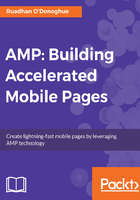
上QQ阅读APP看书,第一时间看更新
Business cases behind AMP
Google is a business, and as such, strategic business pressures lie behind much of its activity. The AMP project is no exception.
- Facebook Instant Articles and Apple News: Facebook and Apple launched similar technologies in the months before AMP was announced. Compared to AMP's open, web-based approach, the Apple; and Facebook services are more closed, in-app experiences focused on the presentation of static news-type content. Despite this, Google would have seen them as a competitive threat on a new front in the battle for publishers' content and readers' eyeballs. Indeed, AMP was originally viewed as a direct response to these services, although now the range of content it supports has moved beyond the capabilities of the competition.
- Ad technology: Google makes a lot of money from ads. Ads have a notoriously bad reputation for slowing pages down, to the point that ad-blockers are now commonplace, and even come bundled with browsers. If users block ads, or leave slow sites without viewing ads, then Google doesn't make money. If Google can improve the ad experience for users, as it does in AMP, then the threat to its ad revenue stream is mitigated.
So, the AMP project was born out of a need for faster websites, the need to answer competitor threats, and the need to maintain ad revenue. Performance underpins all these reasons, and AMP is about bringing web performance to the masses.